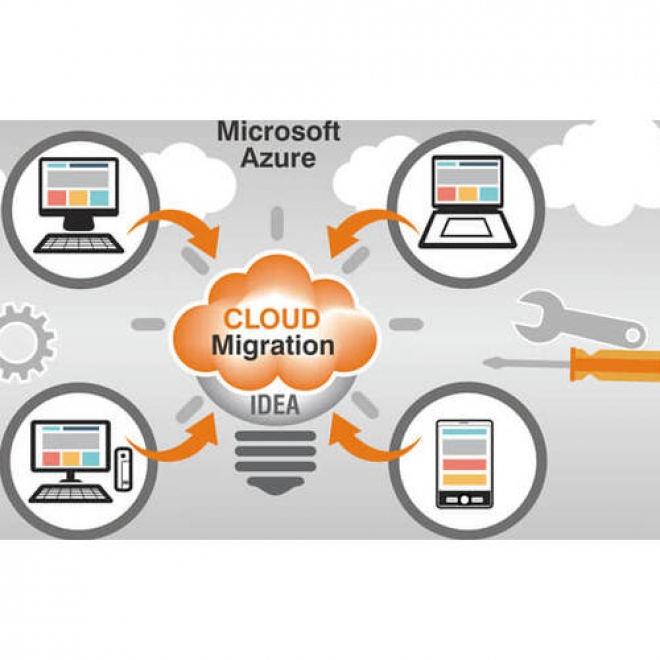Case Studies.
Our Case Study database tracks 18,927 case studies in the global enterprise technology ecosystem.
Filters allow you to explore case studies quickly and efficiently.
-
(2)
- (2)
- (1)
-
(1)
- (1)
- (1)
-
(1)
- (1)
- (1)
- (1)
- (1)
- (1)
- (1)
- (3)
Selected Filters
3 case studies
|
Microsoft Azure Cloud Migration For Idea Management Tool
Microsoft Azure
High cost of hosting dedicated servers regardless of usage of the systems and resources Time required to have application provision for each new instance for end user clientsTime and resources required to manage servers, back up, and IT infrastructure in data center End user clients requiring storage of data in their own countries End user clients asking for on-demand scalability of resources on servers End user clients asking for secured certified data center with required compliances as per their IT security policy
|
|
Ground-breaking Service for Millions Uses Cloud for Online Psychotherapy
Microsoft Azure
According to the World Health Organization (WHO), there are approximately 1.7 billion people in the world suffering from a range of mental health conditions. This might be anything from acute anxiety and clinical depression to obsessive-compulsive disorders. The WHO believes there are 23 million people suffering from these and similar conditions in Egypt alone. However, one of the factors preventing people from receiving treatments are cultural values and social stigma: they say that either these conditions do not exist, or that if people are indeed suffering, they just need the willpower to overcome their afflictions rather than seeking specialized treatment.With an estimated 10,000 website hits per month, Shezlong needed a hosting platform that could not only provide a foundation for the service but also accommodate its open source architecture.
|
|
A Hybrid Switchgear-Communication Solution Satisfies Shopping Center’s No-Antenn
Microsoft Azure
Based in Bolton, England, Ascribe is a leading provider of business intelligence (BI) and clinically focused IT solutions and services for the healthcare industry. Ascribe estimates that 82 percent of National Health Service (NHS) trusts in the United Kingdom use its products. With access to large volumes of data maintained by the trusts, the company wanted a BI solution that would help healthcare providers detect, predict, and respond more quickly to outbreaks of infectious disease and other health threats. Healthcare analysts typically work from data collected and coded when patients receive treatment in clinics and hospitals. “By the time they get that information it’s usually out-of-date,” says Paul Henderson, Business Intelligence Division Head at Ascribe. “The data has already been coded and stored in a record-keeping system, or it’s been collected from a hospital workflow, and that doesn’t always happen in real time.” In addition, huge volumes of potentially useful data existed in text files from sources such as unscheduled visits to emergency rooms, school attendance logs, and retail drug sales. The Internet offered another trove of untapped information including clickstream analysis and social media such as Twitter. “If you think about each clinician who struggles with getting timely, accurate data, and you compound it on a national scale, then it becomes an immense challenge,” says Henderson. “You have lots of small pieces of data coming in from multiple places, and it can be very difficult to aggregate and interpret.”Ascribe had previously worked on a solution to support the analysis of national emergency care attendance. The system was designed to monitor the daily number of people who visited emergency departments in the UK and raise an alarm when it identified unusual levels of activity such as a potential outbreak of an infectious disease. However, it was difficult to collect data from a rapidly growing number of healthcare providers, including mobile clinicians. In addition, clinicians were unable to use the exploding volume of unstructured data from patient case notes and social media feeds. “The processing power you would need to handle all of that information is beyond the capability of most organizations,” says Henderson. “A hospital can’t just stand up a server farm to process millions of case notes from an emergency care system in addition to other data.” To solve these problems, Ascribe decided to design a proof of concept that would create a standardized approach to working with healthcare data. The company asked Leeds Teaching Hospitals, one of the biggest NHS trusts in the UK, to participate in the project. Leeds can generate up to half a million structured records each year in its Emergency Department system. The hospital also generates approximately 1 million unstructured case files each month.Ascribe wanted to create not just a proof-of-concept BI solution for monitoring infectious disease on the national level, but also a tool that could be used to improve operations for local care providers. “Our goal was to find a way to make data flow more quickly in near-real time,” says Henderson. “We also wanted to augment clinically coded data with data harvested from case notes.” The company wanted to create a national knowledge base that both analysts following disease outbreaks and local clinicians could use to improve healthcare. Ascribe needed a highly scalable, end-to-end solution that could work with multiple data types and sources, as well as provide self-service BI tools for users.
|







